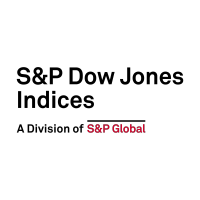Tag Archives: passive investing
Exploring Fixed Income’s Passive Potential
Passive investing has historically been more associated with equities than with fixed income, but recent data indicates a change could be in the winds. S&P DJI’s Tim Edwards and Anu Ganti take a closer look at what’s driving the shift and what a passive transformation could mean for fixed income markets.
- Categories Fixed Income
- Other Tags
Why is Passive Investing on the Rise in South Africa?
Explore what’s driving increased interest in indexing and the growing role of custom index solutions in South Africa with S&P DJI’s Marius Baumann and Chris Rule of 10X Investments.
- Categories Equities
- Other Tags
Turtle Returns: The Hare and the Tortoise
The tale of a footrace between a determined tortoise and a swift but ultimately complacent hare has been with us for a long time. The earliest known version is two and a half thousand years old; it begins with the hare mocking the tortoise’s slow feet, which leads to a challenge and a contest, and…
- Categories Fixed Income
- Other Tags
Finding Fee Savings in Fixed Income
One of the benefits of indexing is its low cost relative to active management. As indexing has grown, investors have benefited substantially by saving on fees and avoiding active underperformance. These benefits are not limited just to equities but have also extended to other asset classes including the fixed income space, where fees can play…
- Categories Fixed Income
- Other Tags
Active or Agnostic?
In order to generate value for his clients, an active investment manager must deviate from a passive benchmark—by choosing sectors, or styles, or individual stocks that the manager predicts will outperform. The manager’s value is dependent on the accuracy of his predictions; the better he is at identifying the best sectors, or styles, or stocks,…
- Categories Equities, Factors, S&P 500 & DJIA
- Other Tags
Persistently Disappointing
If you’ve ever read a prospectus (or, for that matter, an S&P DJI research report), you know that “past performance is no guarantee of future results.” At one level, if you understand that, you understand the most important thing about S&P DJI’s Persistence Scorecards. For the U.S., Europe, Latin America, and Canada (with Australia coming…
- Categories Equities, S&P 500 & DJIA
- Other Tags
Diversification and Performance: Potential Applications of U.S. Equities in Japan
The U.S. equity market is by far the largest in the world, representing 57.7% of the global market capitalization, and it is nearly nine times the size of the Japanese equity market (see Exhibit 1). Hence, Japanese investors may wish to consider U.S. equities in order to not overlook a significant portion of the global…
- Categories Equities
- Other Tags
- Categories
- Equities
- Other Tags
What Drives S&P 500 Rebalance Turnover?
The S&P 500® undergoes quarterly updates—more colloquially known as rebalances—after the close of the third Friday in March, June, September and December. These updates typically affect the S&P 500’s composition and have turnover implications for investors tracking the index. For example, Exhibit 1 shows the S&P 500 turnover at each rebalance between March 1995 and…
- Categories S&P 500 & DJIA
- Other Tags
- Categories
- S&P 500 & DJIA
- Other Tags
Active Performance Shortfalls and the Rise of Passive
Why did indexing take root and how has it grown so far so fast? S&P DJI’s Craig Lazzara and Anu Ganti take a closer look at why indexing works, the size of the passive market today, and the historical savings linked to indexing.
- Categories Equities
- Other Tags
- Categories
- Equities
- Other Tags
Why Indexing Can Be Applied to Thematics
Index funds, which hardly existed 50 years ago, now play a prominent role in global financial markets. But passive investing does not dominate in every market segment. Recently, we have seen exponential growth in so-called “thematic” investing, with a proliferation of themes in areas like cybersecurity, robotics and electric vehicles. This more granular space is…
- Categories Thematics
- Other Tags







